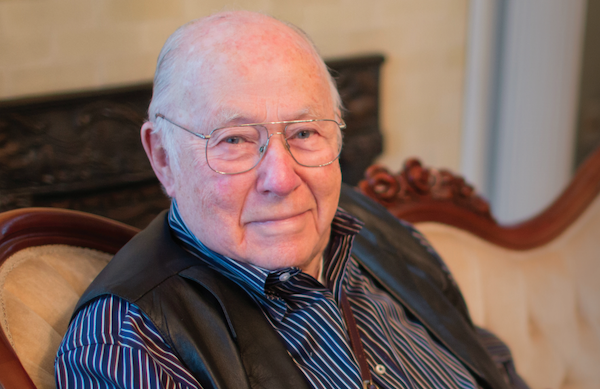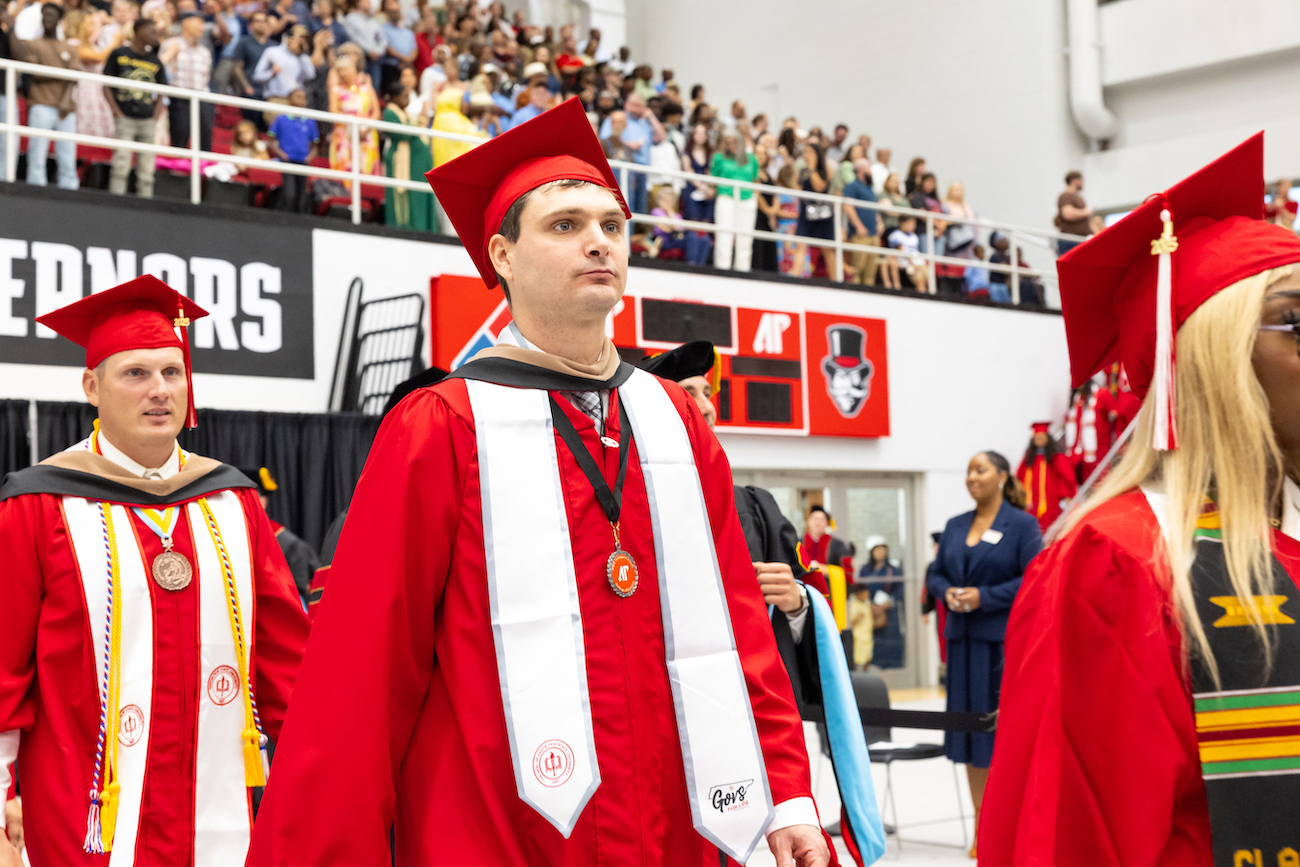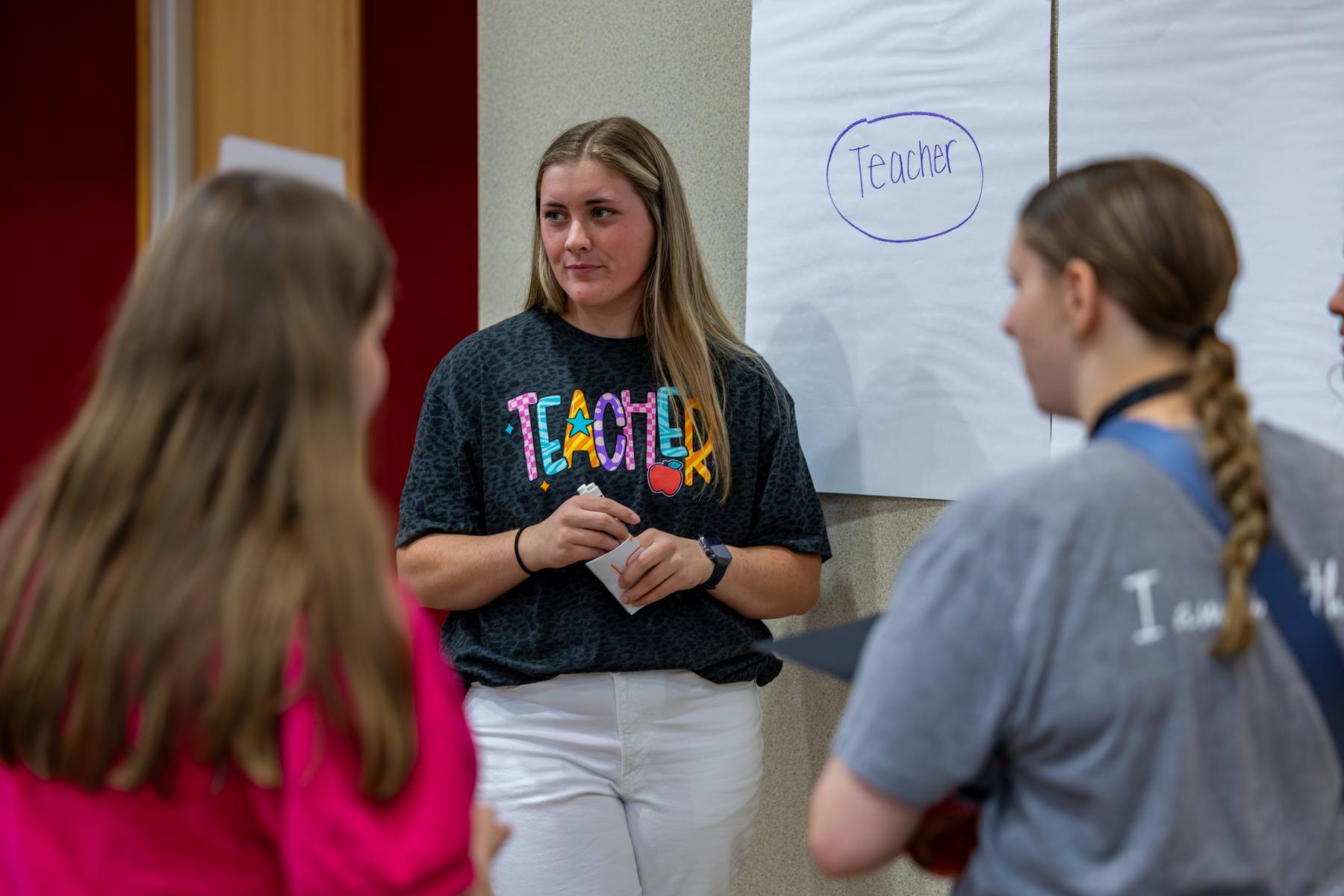The Harvills of Austin Peay: How one family spent 90 years supporting the local university

Evans Harvill (’44, ’47), alumnus, son of a former Austin Peay president and long-time supporter of his alma mater, passed away on Monday, May 10, 2021. He was 95 years old.
“The loss of Evans Harvill is truly a sad one for our Governor family,” APSU President Michael Licari said. “He will be remembered by his friends at Austin Peay as a distinguished alumnus who supported his alma mater in many academic areas, as well as the arts and athletics. Over the years, his family has built a lasting legacy at this University, and he faithfully continued their tradition of excellence throughout his life. Our thoughts are with his wife Sherri and their family during this difficult time.”
Harvill grew up with Austin Peay, arriving on campus as a three-year-old in the summer of 1929, shortly before the new school’s first classes began. A feature story in the 2017 issue of Austin Peay: The Magazine for Alumni and Friends of Austin Peay State University, highlighted the family’s connection to the school.
An edited version of that story is available below the video.
Amy and Evans, 2017
THE FIRST YEARS
In the summer of 1929, a young, handsome World War I veteran named Halbert Harvill arrived in Clarksville to teach history at the newly formed Austin Peay Normal School. The 36-year-old Hickman County native found a small house on College Street, across from the campus, and after getting everything settled, he took his wife, Catherine, and their three-year-old son, Evans, to look at the small school.
“I can remember moving in because it was such a beautiful campus,” Evans Harvill (’44, ’47), who passed away on Monday, said in a 2017 interview. “We had the most gorgeous oak trees, and the only two buildings now that were on the campus when it opened are Harned Hall and, I think, the power plant.”
The state law establishing the new teachers’ college went into effect on April 26, 1927, but Austin Peay didn’t officially open until the fall of 1929. The arrival of the Harvills that afternoon began a relationship between the school and the family that has continued throughout Austin Peay’s entire existence.
“I grew up on that campus,” Harvill said in his gentlemanly southern accent. “I grew up playing in Castle Heights. From the time I was three, I was within walking distance of the college. I’d ride my tricycle on campus.”
Every morning, his father, Halbert, walked from their College Street house to the school grounds dominated by an imposing, Gothic Revival-style structure known as the Castle Building. Narrow towers rose from the building’s corners, and crenellations along the top gave it the look of a medieval fortress. Sometimes, on blustery spring afternoons, Halbert and others spotted strange black objects, like giant crows, in the sky behind the building.
“We’d go on Drane Street and put up our kites,” Harvill said. “We made them out of dry cleaning bags and flour paste. They were big, and they’d almost go out of sight.”
A POST-WAR PRESIDENT

Harvill eventually enrolled at the neighboring school, but in the early 1940s, during World War II, both father and son left Austin Peay, volunteering to serve their country in the military. When Harvill returned in 1945 to finish his degree, he noticed cracks and loose bricks running along the old buildings. One day, he received a call from his father. Tennessee Governor Jim McCord was offering Halbert the position of president at Austin Peay, and the elder Harvill, still in the military, asked his son if he should take it.
“I said, ‘Dad, I know you love the school, and it was your life for so many years, but it’s a no-brainer. The school is dead. There aren’t about 200 students left and the buildings are in disarray. I don’t think anybody can resurrect it,’” Harvill said.
His father thanked him, but ignored his son’s advice. In July 1946, Halbert was appointed president of Austin Peay State College. Nine days into his tenure, a tower on the Castle Building—one of the main classroom buildings on campus—collapsed. The structure was condemned. With large numbers of World War II veterans expected to take advantage of the G.I. Bill that fall, Halbert quickly had Quonset huts—lightweight, prefabricated buildings—brought in from Fort Campbell, Kentucky, for classroom and housing purposes.
Several former soldiers did enroll at Austin Peay, bringing their wives to live with them on campus. This new population prompted Harvill’s mother, Catherine Evans Harvill, to set up a students' wives organization.
“She was the personification of love,” Harvill said. “She tried to visit with the ladies. If they had a problem, she’d go into the Veterans Village and organize the students’ wives.”
During those post-war years, the campus began to grow again, and Halbert made sure Austin Peay had facilities to serve all the new students. Under his leadership, eight new buildings appeared on campus, including the iconic quadrangle made up of the Browning, McCord and Clement buildings. He also pushed the school to finally receive its accreditation through the Southern Association of Colleges and Secondary Schools.
RECLAIMING HISTORY
When the Harvill family first arrived in the summer of 1929, construction crews were hurrying to finish the Normal School’s first new building, Harned Hall. According to the book “A History of Austin Peay,” by 1987, the building had “deteriorated noticeably due to lack of maintenance.” A Blue Ribbon Committee recommended that the historic building be demolished. Halbert and Catherine had both since passed away, but Harvill’s wife at the time, the former Peggy Douglas (’49), helped lead a campaign to save the historic building. It now serves the departments of history and philosophy and languages and literature.
Before Peg Harvill passed away, she continued to preserve Austin Peay’s history by painting popular watercolor portraits of campus buildings, and the couple endowed two scholarships for the University’s President’s Emerging Leaders Program. And in recent years before he passed away, Harvill, a former president of the APSU National Alumni Association, remained an active champion of the school.
He was a member of The Austin Peay Society—an organization that honors the institution’s major donors—and in 2004, he was honored with the Tennessee Board of Regents’ Chancellor’s Award for Excellence in Philanthropy.
Harvill, a retired local attorney, spend his last years with his wife, Sherri, in Clarksville’s Sango community. Even in his 90s, he regularly returned to the campus he called home, where he often thought back to those days when his father walked across the quiet grounds to teach a history class.
“I’m so proud of how it has progressed,” Harvill said. “Not only physical situations, but in the quality. Every time I’m over there, I think how happy my father would be if he could see it. He loved it dearly.”
News Feed
View All News
The Graduating Class Gift Campaign, established in 2018, helps support college-specific funds and essential student resources across campus.
Read More
The event, held in the Morgan University Center Ballroom, brought together students from Teaching as a Profession (TAP) programs across Middle Tennessee for a morning of hands-on activities, demonstrations, and networking opportunities.
Read More
Two hours after his interview with the Clarksville Police Department (CPD), Army veteran Dustin Zook had a job offer in hand--a swift result powered by the preparation he built through Austin Peay State University's Military-Affiliated Professionals Program (MAPP).
Read More